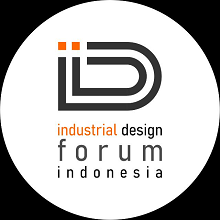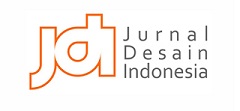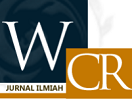PEMANFAATAN LIMBAH PRAKTIKUM MENJADI PRODUK KRIYA IKAT PINGGANG WANITA
Abstract
The Education Laboratory has the main function as a provider of practicum facilities. Leather Products Workshop is included in the Education laboratory which provides student lecture practicum services. The practical work produced by students are bags, wallets, card wallets and ID card holders. The activity of making works involves processing materials using the equipment that has been provided. These activities also produce practicum waste that is not used. Handling of practical waste needs to be considered properly so that it does not contribute much to environmental pollution. The practicum waste generated by Leather Products Workshop is pieces of leather left over for making student practicum works. That waste were used in this study. The goal of this study is produce women belt. Belts have good visualization ini presenting waste utilization works. That products then described using a design approach with a qualitative descriptive method. The materials used are leather waste, synthetic glue and nylon thread. The equipment used are a hook, silver ink, scissors, round “plong”, “pandokan”, wooden hammer and sewing machine. The results of this work are craft products in women's belt with a combination of aesthetically knitting techniques. This study concludes that practical waste can be processed into craft works that have aesthetic value.
Keywords
Full Text:
PDF (Bahasa Indonesia)References
Creswell, John. W. (2014). Reseaerch Design Pendekatan Metode Kualitatif, Kuantitatif dan Campuran. Yogyakarta: Pustaka Pelajar.
Gustami, S. (2007). Butir-butir mutiara Estetika Timur: Ide Dasar Penciptaan Seni Kriya Indonesia. Yogyakarta: Prasista.
Indrawan, I., & dkk. (2020). Manajemen Laboratorium Pendidikan. Pasuruan: Penerbit Qiara Media.
Kartika, D. S. (2007). Estetika. Bandung: Rekayasa Sains.
Madury, S. A., Fakhrunnisa, F., Panjaitan, R., Ni'mah, S., & Chandra, T. P. (2014). Prohilila (Produksi Hidrogen dari Limbah Laboratorium) sebagai Mediator Energi Pembangkit Listrik dengan Metode Fuel Cell. Khazanah, 55-66.
Nuraini, E., & Lestari, F. (2022). Pemanfaatan Limbah Bahan Khusus Laboratorium Pengujian Fisis untuk Pembuatan Produk Strap Tali Jam Tangan . Jurnal Pengelolaan Laboratorium Pendidikan, 7-11.
Ponisri, P., & Soekamto, M. H. (2020). Pemanfaatan Limbah Anorganik Untuk Penataan Taman di Kelurahan Malawele. Abdimas: Papua Journal of Community Service, 23-29.
Rispul, R. (2012). Seni Kriya antara Tekhnik dan Ekspresi. Corak Jurnal Seni Kriya, 91-100.
Rosdiana, A. (2018). Rajutan pada Kriya Seni Handmade. Jurnal Suluh, 69-80.
Sundarta, I., Sari, A. Y., & Wibowo, H. P. (2018). Pengelolaan Limbah Organik Menjadi Kompos Melalui Pembuatan Tong Super. Jurnal Abdi Dosen, 261-263.
Walker, J. A. (1989). Design History and the History of Design. London: Pluto Press.
DOI: http://dx.doi.org/10.22441/narada/2022.v9.i3.002
Refbacks
- There are currently no refbacks.
Fakultas Desain dan Seni Kreatif
Universitas Mercu Buana
Gedung E Lantai 4
Jl. Raya Meruya Selatan no.1, Kembangan, Jakarta 11650
Tlp./Fax: +62215871335
Journal International Standard Serial Number (ISSN) Registration:
The Journal is indexed by:
Tools for Citations & Plagiarism Detection:

Ciptaan disebarluaskan di bawah Lisensi Creative Commons Atribusi-NonKomersial 4.0 Internasional
 NARADA: Jurnal Desain dan Seni
NARADA: Jurnal Desain dan Seni

























